The quality of water varies from one well to another. Hence, you cannot determine if your well water is safe for your plants. Therefore it is important to get well water tested if you fear it is damaging your plants.
Moreover, if you have noticed that well water is killing your plants, you need to immediately stop watering your home’s plants with well water and determine why it is damaging the plants in your home.
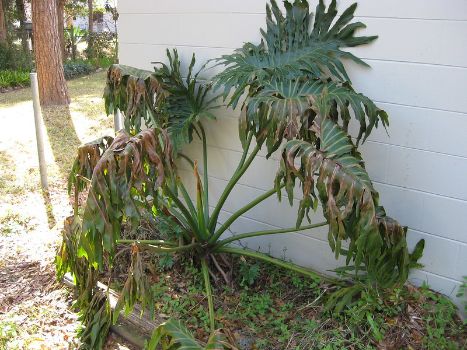
Common Signs that Well Water is damaging your Plants
- Brown and lifeless leaves
- Poor or no flowering even after the use of fertilizers
- White powder deposits on the soil surface
- Stunted root growth
Prerequisite of Watering Your Plants with Well Water
Well water is an underground water source. It is rich in various minerals that can nourish your plants. However, it contains various elements like sodium, fluoride, iron, nitrogen, nitrates, nitrites, and other contaminants that can damage your plants if present in excessive.
EPA recommends annual testing for all private water wells. You must also get your water tested after floods, nuclear fallout, or any event that can possibly impact well water quality.
Once you have the test results, you can determine if well water is safe for plants or if you need to install water treatment systems to make it safe for your family and the plants.
Common Contaminants in Well Water and Their Impact on Plants
Iron
Iron is a common contaminant in well water. It enters well water through seeping, rainfall, and snow melts.
While iron is necessary for respiration, photosynthesis, and growth, large quantities can damage plants. When plants are watered with water containing excessive iron, it increases the concentration of iron by combining it with iron already present in the soil.
Michigan State University published a report that states soils with low pH are more susceptible to iron and manganese toxicity.
Common Symptoms: Plants watered with excessive iron often lose their pigmentation and turn gray, orange, or yellow. Too much iron limits the food production of plants, ultimately resulting in plants being killed.
Solutions: Iron is commonly found as ferrous (water-soluble) iron in well water. A whole-house iron filter is the best way to remove iron. Some people also use a salt-based water softener to remove small amounts of iron, usually up to 6 PPM. The benefit of using a water softener is that it removes water hardness. The drawback is frequent maintenance when using a softener to remove iron.
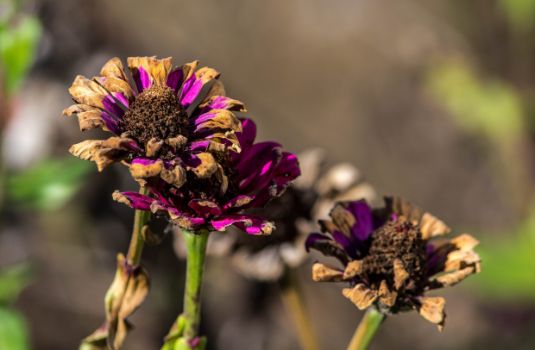
Calcium & Magnesium (Hard Water)
Around 85% percent of the USA has hard water in their homes. The likelihood that your well water is hard is too high to ignore. Calcium and magnesium are responsible for making water hard.
Calcium and magnesium are both required for plant growth but in limited amounts. When you water plants with hard water, the concentration of these elements in the soil increases.
Hard water is not only bad for plants; it also damages your appliances, skin, and hair.
Common Symptoms: You’ll see white and chalky deposits on the soil and leaves. These deposits prevent plant growth by hampering food production and air supply. Over time, these deposits can wilt your plants.
Solutions: A short-term solution is to wipe the plants with water and a mild acidic solution. You can use vinegar water (1 part vinegar in 3 parts water) to wipe the leaves. Don’t forget to wash the leaves with clean water after applying the vinegar solution. You can also use a fertilizer designed to reduce water’s pH.
A permanent and effective solution is to install a water softener. You can go for a salt-based water softener or a salt-free water softener. Each has pros and cons, but both are effective against hard water. It is better to test your water before installing a softener.
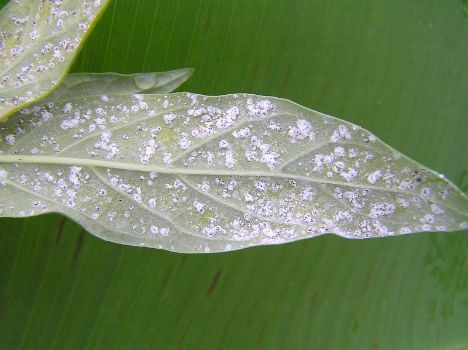
Nitrogen
Nitrogen is essential for proper plant growth, but too much can make plants suffer. Nitrogen is usually present in high concentrations in soils.
It enters well water through sewage effluent and runoff from the land where manure or fertilizers has been stored. Nitrates are also a common problem linked with nitrogen. Together, an excessive concentration of these two can kill your plants.
Common Symptoms: Excessive nitrogen turns leaves yellow and reduces flower and fruit growth. Your plants will shrink and die after a few months.
Solutions: You can use an ion-exchange unit to remove nitrogen and nitrates from well water. A reverse osmosis system works effectively, but most people use it for drinking and cooking water. You can water a few plants with RO water, but using it for large gardens will be inconvenient.
Adding woodchips or sawdust to the nitrogen-affected soil is a short-term and instant solution. It will absorb excessive nitrogen and bring your plants back to life.
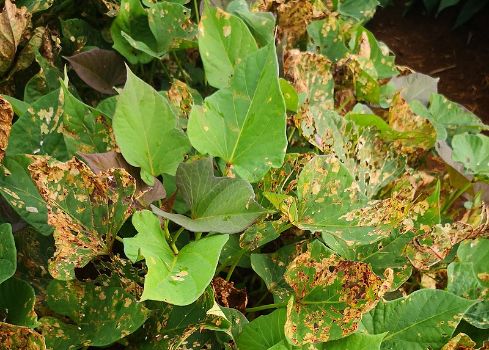
Fluoride
Fluoride is not a necessary nutrient for plants. When plants are watered with fluoride-rich well water, it leads to fluoride toxicity.
Fluoride is usually absent in well water or in a small concentration that will not impact your plants.
However, fluoride is not good for your family’s health. EPA has put a limit of 4.0 mg/L in drinking water. Private well owners must ensure their well water has fluoride below this limit.
Common Symptoms: Excessive fluoride makes plants wither, and leaves become crispy. The plant will look lifeless and collapse within a few months.
Solutions: You can remove fluoride from well water using RO, activated carbon, and alumina filters. These filters are not required unless you have high fluoride levels in well water. So, testing well water before installing a fluoride filter is better.
Fluoride-affected plants can also be fixed by adding calcium carbonate (lime) to the soil. Plant experts usually recommend adding 1 tbsp to 1 gallon of soil.
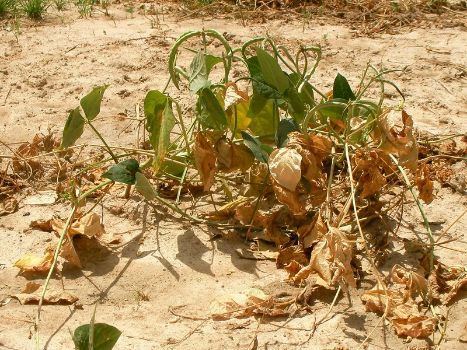
Sodium
Sodium is not essential but helps plants grow in the absence of potassium. Sodium is found in well water but in low concentration. Most soils also contain sodium with varying concentrations.
The problem arises when a well has a high sodium concentration, and water is given to plants growing in high-sodium soils. It hinders water absorption by plants and makes them dehydrated.
Common Symptoms: The plants appear wilted and have stunted growth. Prolonged exposure can kill plants.
Solutions: A short-term and instant solution is to water your soil to reduce sodium concentration in the soil. However, the problem will remain unfixed if you use water other than your well water.
The permanent solution to fix high sodium concentration in well water is to install an RO filter, distilled water, or a de-ionization filter.
Water pH
A pH range of 5.5 to 7 is ideal for plant growth. While soil has a pH of 4-10, the problem arises when your well water is acidic. Some wells have acidic water that lowers the soil pH. A low pH reduces the availability of nutrients and increases the availability of toxic elements.
Common Symptoms: The plants appear dehydrated and unhealthy. You’ll see yellow leaves, stunted growth, and poor flowering or fruits.
Solutions: You can use calcium or magnesium to increase the pH of the soil. Simply use a material that contains lime to increase the soil’s pH. You can also use baking soda or eggshells to increase soil pH.
Installing an acid neutralizer is the best way to increase water’s pH. It increases the pH of well water and makes it safe for your plants and your home.
Read More: Methods to Raise PH in Well Water
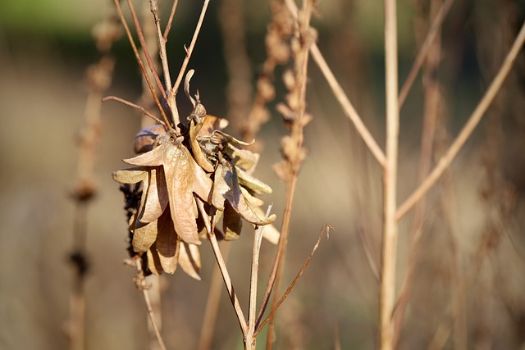
Biological and Chemical Contaminants
Well water can be host to a variety of contaminants such as bacteria, algae, and fungi. Some wells may also contain lead, mercury, arsenic, radionuclides, and hydrogen sulfide.
Common Symptoms: All of these make plants weak and stunted in one way or another. They reduce food production or either take up plant nutrients.
Solutions: The solution varies based on specific contaminants. It is best to get your water tested to know which contaminants are present and then select the right treatment method.
Watering Plants with Well Water: Pros and Cons
Pros
- Contain necessary nutrients for plant growth, such as calcium and magnesium
- Free to use
- 24/7 availability
- Can water large or small gardens alike
Cons
- Requires electricity to pump
- It may not keep up with sprinklers if pressure drops.
- Harmful to plants if contaminated
- Pressure at other places drops when used too much
Shallow Wells vs. Deep Wells: Which is Better for Watering Plants?
It depends on the water quality. However, shallow wells are generally considered less safe for drinking and watering plants. Shallow wells may also pick contaminants from surface run-off sources such as rainwater, sewage, and spring water.
Deep wells are safer for drinking and watering plants. These wells have an extended soil layer around water that acts as a natural water filter and removes many contaminants.
Please note that you cannot say which type of well is safe for plants. Shallow wells in some cities have better water quality than deep wells in some cities. So, getting your water tested before deciding if it is safe for watering plants is important.
Best Water Source for Plants
Tap Water (City Water)
Local authorities maintain tap water so it is free from most contaminants. However, it contains chlorine, added to kill microorganisms in water.
Chlorine is added up to 4 PPM, but chlorine toxicity is possible in many cases, and many people have reported burnt leaves and damaged plants while using city water.
You can fix this by letting city water sit for 1-2 days before watering the plants. However, this method doesn’t work for chloramines. You’ll need an activated carbon filter to remove all chlorine-related contaminants.
If you are worried about other contaminants in city water, you can request a water quality report from local authorities. It will be helpful to upgrade your water treatment system to make water fit for your home and plants.
Bottled Water
Bottled water is another option for watering a small garden or plants at your home. Please note that it is mostly free from contaminants and good for plant health, but it is a costly option.
Distilled Water
Distilled water can be a good option because it is pure H20. The downside is that it doesn’t contain the necessary nutrients. You’ll have to use fertilizers with distilled water.
Rainwater
Rainwater is excellent for plants. It contains more oxygen than other water sources. It also brings carbon dioxide into the water when it rains. The only problem is its collection. You’ll need to install a rainwater collection setup to gather enough water for your plants.
Can I water a vegetable garden with well water?
It depends on the well water quality and the type of vegetables you grow. Vegetables like cucumber, tomato, and salad leaves require specific growth conditions.
I have a water softener installed on my well water. Will it affect my plants?
A salt-based water softener makes water soft but adds a small amount of sodium or potassium to your water. Soft water is usually safe for drinking and cooking unless you are on a sodium-controlled diet.
Using soft water for a short time is safe, but prolonged use can affect soil quality and increase salt levels. You can avoid this problem by mixing rainwater with soft water or watering your plants with bottled water. You can also bypass water softener when watering your garden if your well water is of better quality.
You must also not use soft water to fill garden ponds as soft water harms pond fish and can impact algae growth.
Final Words: Can I use well water in my garden?
Yes. You can use well water to garden your plants, but you must ensure it is free from contaminants and properly treated. It may take some time to adjust the water quality, but once you get hold of it, you’ll get many benefits of using well water to water your plants.
